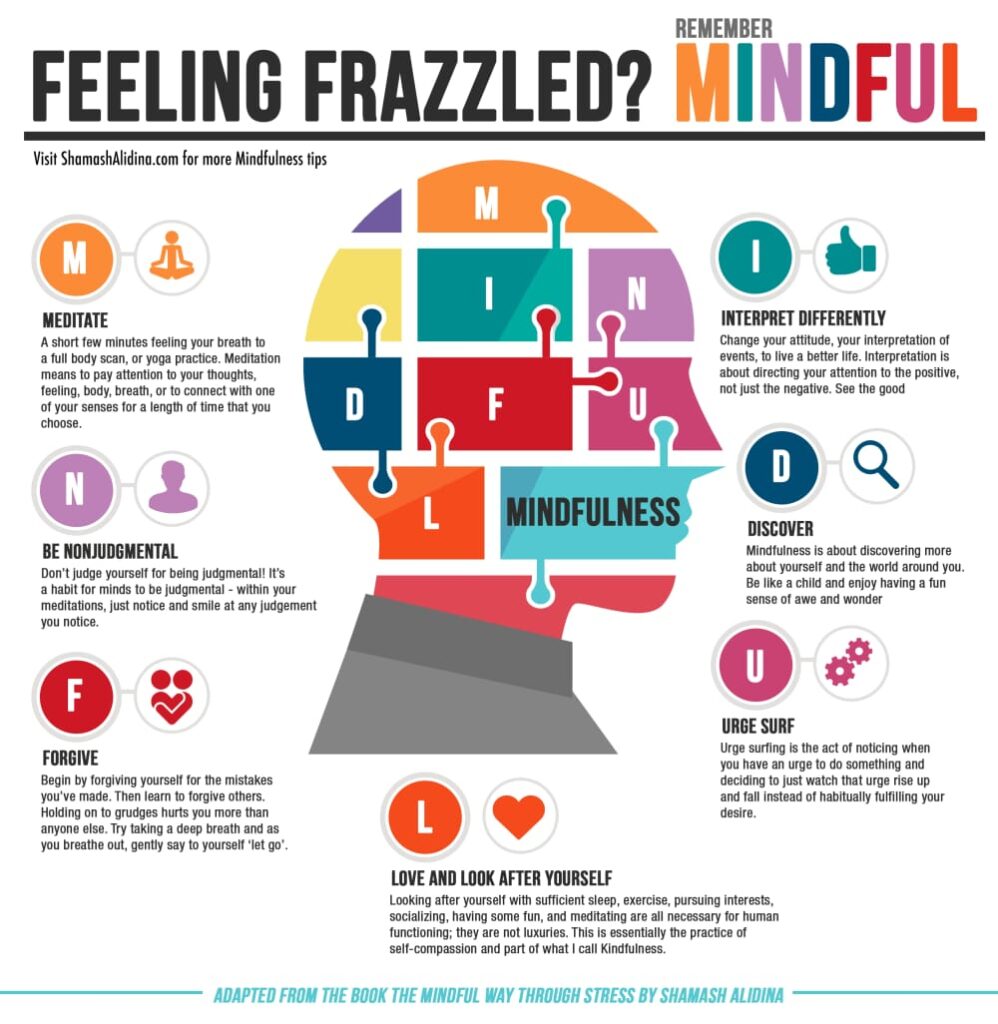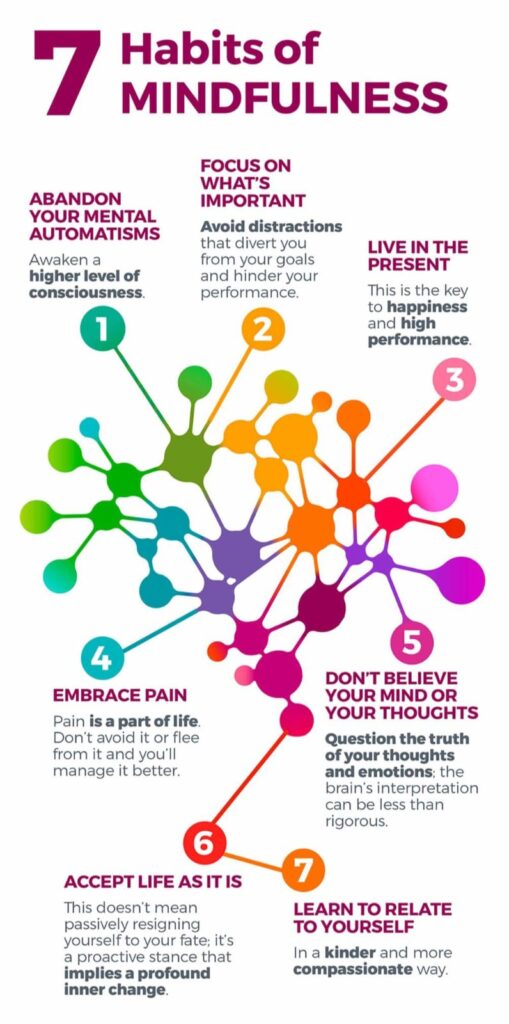The Evolving Standard of High-Performance Living
In today’s fast-paced business world, executives are no longer measured by productivity alone, but by their ability to make high-stakes decisions with clarity, empathy, and resilience. This shift marks the rise of what many now call high-performance living—a lifestyle that integrates physical vitality, mental agility, and emotional balance.
Traditional leadership models that prioritized output over outlook are being replaced by holistic approaches that emphasize mental clarity and presence. In this context, mindfulness—a practice rooted in ancient wisdom and now backed by modern neuroscience—is emerging as a key tool for thriving under pressure.
At its core, mindfulness is about being fully present in the moment, without judgment. While it has long been associated with spiritual practices, it is now making a profound impact in boardrooms and executive suites.
The Demands of Executive Decision-Making
According to McKinsey & Company, executives make hundreds of decisions every year that can significantly influence their organizations’ performance—and many of them are made under intense pressure.
At this level, decision fatigue is not just a theory—it’s a lived reality. As leaders face a relentless stream of emails, meetings, and critical judgments, they are prone to cognitive overload and stress-related errors.
Emotional reactivity, tunnel vision, and impulsive thinking can creep in, especially when personal well-being is sacrificed for productivity. In fact, research shows that chronic stress can impair executive functioning, including memory, attention, and decision-making.
This is where mindfulness enters the conversation—not as a soft skill or fleeting trend, but as a practical and evidence-based solution for navigating the cognitive and emotional challenges of executive leadership.
What Is Mindfulness? A Modern Tool for Executive Clarity
Mindfulness has become a buzzword in recent years, often associated with yoga classes, meditation apps, and wellness retreats. But beyond the trend, mindfulness is a powerful cognitive skill that is increasingly being recognized for its real-world benefits in leadership and decision-making.
At its simplest, mindfulness means paying full attention to the present moment, intentionally and without judgment. It involves tuning into your thoughts, emotions, and surroundings with clarity rather than distraction or reactivity.
While mindfulness has its roots in ancient Buddhist philosophy, its modern, secular application has been popularized through evidence-based programs like Mindfulness-Based Stress Reduction (MBSR), developed by Dr. Jon Kabat-Zinn in the 1970s.
In essence, mindfulness provides a mental operating system upgrade—one that aligns perfectly with the demands of high-performance leadership in an increasingly complex world.
The Science: How Mindfulness Supports the Brain
Studies using fMRI scans have shown that regular mindfulness practice can increase the density and connectivity of the prefrontal cortex, strengthening a leader’s ability to focus, analyze, and respond thoughtfully under stress.
A Harvard study found that just eight weeks of mindfulness meditation can significantly reduce the size of the amygdala while increasing gray matter in regions associated with learning and memory.

This infographic breaks down mindfulness into an acronym—MINDFUL—offering simple, actionable tips like meditating, forgiving, and discovering joy. It highlights how changing perception and caring for oneself can significantly reduce stress and improve mental well-being.
According to research published in the journal Psychological Science, even brief mindfulness training can help individuals stay focused and avoid distractions, leading to better cognitive performance.
Another major benefit is cognitive flexibility—the ability to shift perspectives, adapt to change, and respond creatively to new challenges. This trait is essential for executives dealing with rapidly evolving business landscapes.
Mindfulness increases this flexibility by enhancing neural pathways involved in executive functioning and adaptability.
Mindfulness in the Boardroom: Real-World Examples of Impact
One of the most well-known examples is Google’s “Search Inside Yourself” program, originally developed by engineer Chade-Meng Tan. This mindfulness-based emotional intelligence course has been adopted by thousands of employees, including top executives.
At Salesforce, CEO Marc Benioff has been a vocal advocate for mindfulness and meditation. The company has implemented mindfulness zones and encourages employees to engage in daily practices. Benioff believes mindfulness has been instrumental in helping the company build not just profits, but purpose-driven leadership.
Ray Dalio, founder of Bridgewater Associates, one of the world’s largest hedge funds, attributes much of his success to regular mindfulness meditation. Dalio practices Transcendental Meditation and claims it enhances his creativity, stress management, and clarity under pressure—qualities essential in the high-stakes world of finance.
Companies like General Mills have also embraced mindfulness with measurable results. After implementing mindfulness programs, employees reported a 20% improvement in decision-making, 30% reduction in stress levels, and a significant increase in workplace engagement.
Here are just a few tangible benefits reported by executives and organizations that have adopted mindfulness practices:
- Improved clarity and confidence during high-pressure decision-making
- Greater emotional regulation, reducing reactive behavior in tough conversations
- Enhanced creativity and innovation, especially in leadership roles
- Increased empathy and active listening, strengthening workplace relationships
- Reduced burnout and absenteeism, leading to improved team productivity
In essence, mindfulness is evolving from a personal wellness tool to a strategic leadership asset. As more executives experience its impact, it’s becoming clear that a mindful leader isn’t just calmer—but smarter, more resilient, and more visionary.
Mindfulness as a Competitive Advantage in the Age of Burnout
In a world where executives are expected to perform at peak levels 24/7, burnout has become a crisis of leadership. The World Health Organization now officially recognizes burnout as an occupational phenomenon characterized by chronic workplace stress that has not been successfully managed.
It manifests as emotional exhaustion, depersonalization, and a decline in performance—factors that directly undermine effective decision-making and long-term organizational success. According to a Deloitte survey, 77% of professionals say they have experienced burnout at their current job, and over 50% cite it as a recurring issue.
It helps executives detect early signs of fatigue and make conscious adjustments before performance declines. This proactive approach allows leaders to sustain their energy and clarity over the long haul—a crucial advantage in today’s volatile work environments.
Leaders at companies like Intel have reported that their mindfulness programs not only reduce stress but also improve creativity and communication—giving them a measurable edge over less mindful competitors.
Integrating Mindfulness into Executive Routines
Mindfulness doesn’t require hours of silent meditation or major lifestyle overhauls. Instead, it’s about building intentional moments of awareness into the day—moments that foster clarity, focus, and emotional balance, even amidst back-to-back meetings and high-stakes decisions.
Many leaders start with micro-practices—brief, consistent moments of mindfulness that can fit seamlessly into their existing schedules. For example, taking 60 seconds of focused breathing before entering a critical meeting can significantly reduce stress and improve clarity.
Apps like Headspace and Calm offer short, guided meditations specifically designed for busy professionals, making it easier than ever to build a daily mindfulness habit.

This visual outlines seven key habits that cultivate mindfulness, such as abandoning mental automatisms and embracing pain. It emphasizes practical steps to boost awareness and achieve high performance through intentional focus and presence.
Incorporating mindfulness into the start of the day—such as through a morning reflection or intention-setting—helps prime the mind for calm and conscious leadership. A few minutes of journaling, breathwork, or even a mindful walk can set the tone for the hours ahead.
As Harvard Business Review notes in its guide to mindfulness for executives, even small rituals can make a major difference in how leaders respond to challenges and make decisions.
Practicing email awareness, turning off non-essential notifications, or even using mindfulness reminders throughout the day (such as gentle nudges from apps like Insight Timer) can help reduce distraction and reclaim attention.
Here are a few practical tips to help executives get started:
- Begin with just 5–10 minutes daily of guided meditation or focused breathing
- Use transition moments (like walking to a meeting or commuting) as mindfulness checkpoints
- Implement weekly reflections to evaluate decisions and stress responses mindfully
- Share mindfulness with teams to foster a more grounded, emotionally intelligent culture
The Path Forward: Mindfulness as the Cornerstone of Executive Excellence
As leadership landscapes continue to evolve amidst rapid technological change, economic volatility, and growing employee expectations, the definition of executive excellence is shifting.
It’s no longer enough to simply be strategic or efficient—leaders must also be emotionally resilient, self-aware, and deeply attuned to both their teams and themselves. This is where mindfulness moves from being a helpful tool to a foundational skill for future-ready leaders.
This skill is critical in high-stakes environments where reacting impulsively can result in poor decisions. According to research from the Harvard Business Review, the busier and more stressed leaders are, the more they need mindfulness to ground their thinking and behavior in awareness rather than reactivity.
More companies are beginning to recognize this. Global giants like SAP and Google have embedded mindfulness into their corporate culture—not as a feel-good initiative but as a strategy for sustainable performance.
Frequently Asked Questions (FAQs) on The Future of High-Performance Living
What is mindfulness, and how is it different from meditation?
Mindfulness is the practice of being fully present and aware in the moment, without judgment. Meditation is one of the tools used to develop mindfulness, but mindfulness can also be practiced during daily activities like walking, eating, or even working.
Can mindfulness really improve executive decision-making?
Yes, numerous studies and real-world applications show that mindfulness enhances focus, reduces stress, and improves emotional regulation, all of which are crucial for high-quality decision-making.
How much time do I need to practice mindfulness daily to see results?
Even 5 to 10 minutes of consistent daily practice can yield noticeable benefits within a few weeks. The key is regularity, not duration.
Is mindfulness backed by science or is it just a trend?
Mindfulness is strongly supported by neuroscience and psychology. Brain imaging studies show measurable changes in areas responsible for memory, emotion regulation, and attention after regular mindfulness practice.
Do I need to attend a course or retreat to start practicing mindfulness?
No. While structured programs can help, you can begin practicing mindfulness using mobile apps, books, online videos, or simple breathing exercises.
Is mindfulness only useful for stress management?
While stress reduction is a major benefit, mindfulness also enhances focus, creativity, empathy, and decision-making, making it highly valuable for executive performance.
Can I practice mindfulness even if I have a very busy schedule?
Absolutely. Mindfulness can be integrated into brief moments throughout the day—during your commute, while waiting in line, or even in between meetings.
How do mindful leaders differ from traditional leaders?
Mindful leaders tend to be more self-aware, emotionally intelligent, empathetic, and resilient. They create more trusting and collaborative team environments.
Is mindfulness a religious or spiritual practice?
While mindfulness has roots in Buddhist traditions, it is widely practiced in secular, evidence-based forms in corporate, medical, and educational settings worldwide.
Can mindfulness help me prevent burnout?
Yes. Mindfulness helps you become more aware of early signs of stress and burnout, allowing for better self-regulation and healthier work-life balance.
How does mindfulness improve focus and attention?
Mindfulness trains the brain to stay present, reducing the impact of distractions and improving sustained attention, which is essential for strategic thinking.
Can mindfulness be practiced in group settings at work?
Yes. Many organizations conduct short group mindfulness sessions during meetings or workshops, which can improve team focus and communication.
Is there a best time of day to practice mindfulness?
While any time works, many executives find early morning or transition periods between tasks ideal for grounding themselves through mindfulness.
What if I get distracted while practicing mindfulness?
Distraction is normal. The goal isn’t to eliminate thoughts but to gently return your attention to the present moment each time you notice your mind wandering.
Can mindfulness help with anxiety and emotional reactivity?
Yes. Regular mindfulness practice strengthens emotional regulation and reduces overreactive patterns, helping you respond rather than react to stress.
How does mindfulness relate to emotional intelligence?
Mindfulness enhances self-awareness, self-regulation, and empathy—core components of emotional intelligence—which are vital for effective leadership.
Do organizations really benefit from implementing mindfulness programs?
Yes. Many companies report improved employee engagement, lower absenteeism, better communication, and more innovative thinking following mindfulness initiatives.
What role does breathing play in mindfulness practice?
Conscious breathing anchors attention in the present moment, calms the nervous system, and serves as a powerful entry point to mindfulness.
Can mindfulness be measured in terms of leadership outcomes?
While it’s difficult to quantify all aspects, many leaders report improvements in clarity, confidence, decision-making speed, and team dynamics.
Is mindfulness suitable for all personality types?
Yes. Whether introverted or extroverted, high-strung or calm, anyone can benefit from mindfulness by tailoring the practice to suit their preferences and lifestyle.





